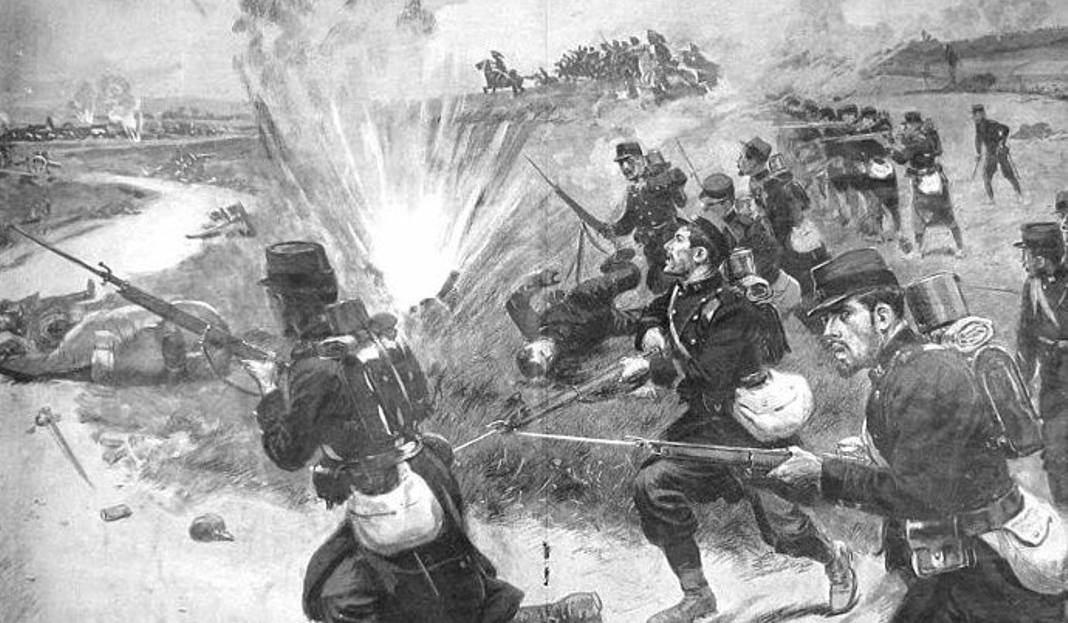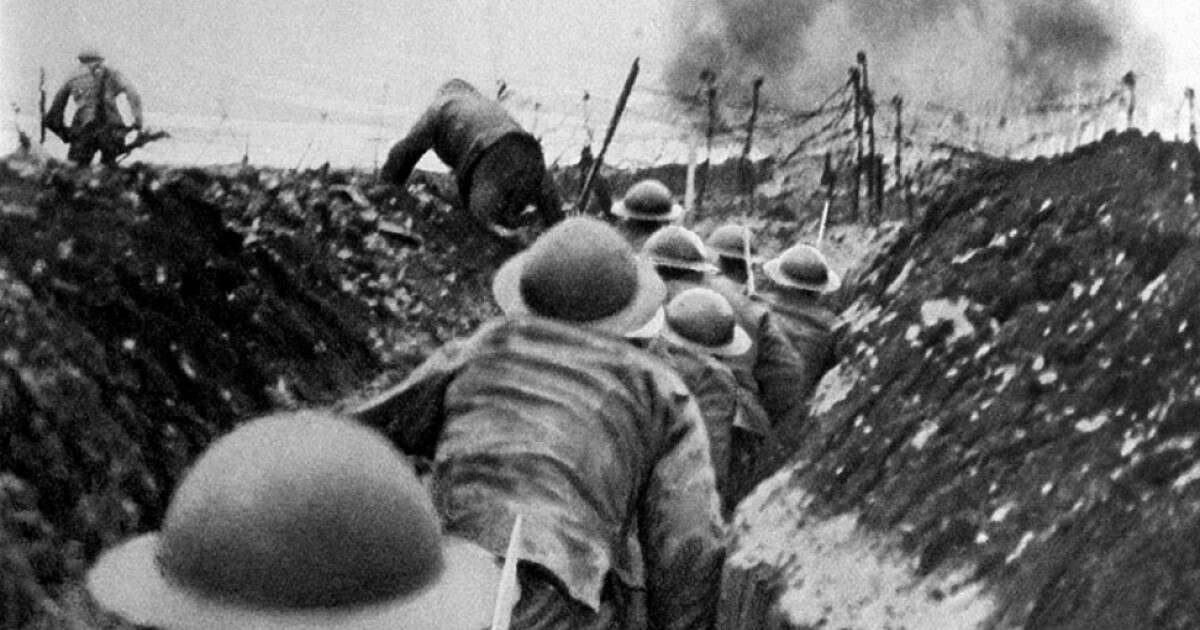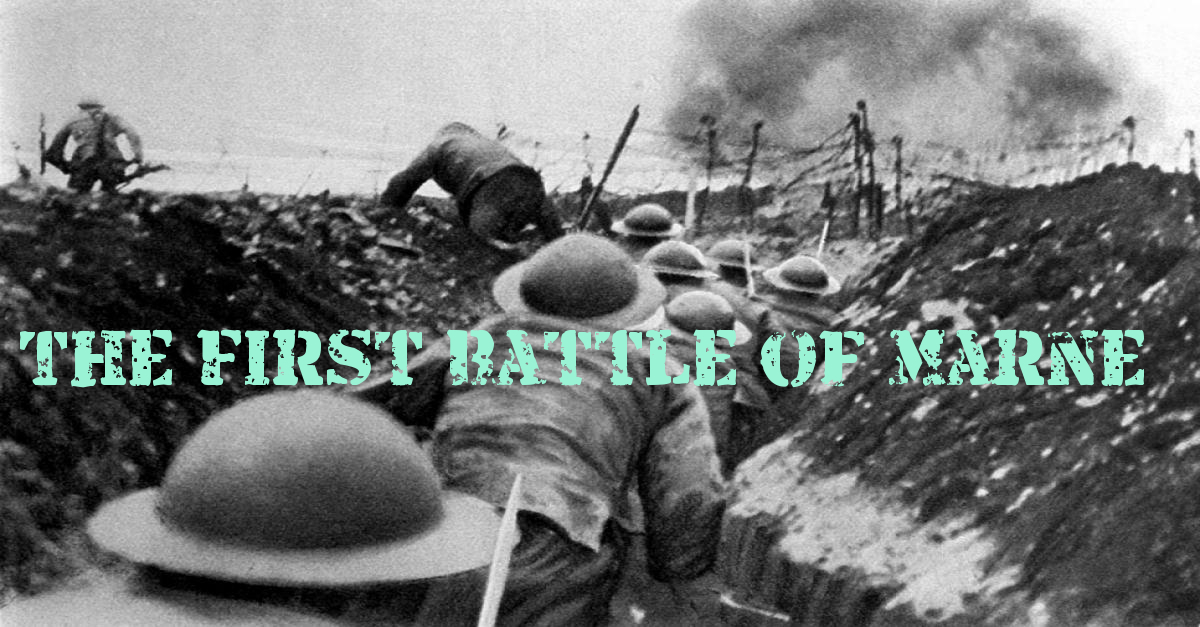
The First Battle of Marne
Thus far in the war, the Germans had been making great progress in their advancement. They had already successfully invaded Belgium and north-eastern France, beating back the Allied forces of France, Belgium, and England with relative ease. Their next mark was Paris.
Meanwhile, the Allied forces had been busy rapidly retreating under the command of French Commander-in-Chief, Joseph Joffre. But, it was time for the Allies to stop retreating and take the offensive. They were, after all, now in a fortified barrier.
The German 1st Army, under Gen. von Kluck, had changed plans and, instead of swinging southwest towards Paris, had instead decided to swing north, creating a 30-mile gap between him and Gen. von Bülow’s 2nd Army. This took them straight through the valley of the River Marne. General von Kluck was forced to halt.
Gen. Joffre already expected this maneuver, thanks to “air reconnaissance and radio intercepts, the first time either had been used in major conflict” (Source). With this information, he “decisively ordered his whole left wing to turn about from their retreat and to begin a general offensive against the Germans’ exposed right flank” (Source). The offensive was due to begin on September 6th.
But, on the fifth, the French 5th Army, under the direction of M.J. Maunoury, began attacking the Germany 1st Army’s right flank. They were joined by the British Expeditionary Force (BEF) and the French 6th Army, and even more members of the 5th.
[Below: The BEF attacked between the German 1st & 2nd Armies]

But this wasn’t nearly the manpower they needed to defeat the German 1st Army. It seemed that the Germans would out-power them, when they were saved by more of Maunoury’s men. Actually, Maunoury’s troops, racing to the front in “requisitioned Paris taxis and buses – the first extensive use of motorized transport in wartime and forever celebrated as the ‘taxis of the Marne,’” actually ran into a surprised von Kluck. (Source).
The next day (Sep 8), news began to arrive of another source of help. Here, the BEF “was advancing into the gap between [Karl von Bülow’s] 2nd Army and von Kluck” (Source). Gen. von Bülow ordered a halt, allowing von Kluck to do the same.
That night, French commander Gen. Franchet d’Esperey’s 5th Army landed a surprise attack against von Bülow’s 2nd army, widening the gap between the two German armies even more. (D’Espery had recently replaced the overly cautious General Lanrezac as commander of the 5th). On top of this, the Ferdinand Foch’s 9th Army, located in the St.-Gond marshes, played a strategic role in frustrating the Germans with their “tenacious defense” against numerous attempts by the Germans to “dislocate the French thrust by collapsing Joffre’s right wing” (Source).
Finally, on September 9th, German Chief of Staff, Helmuth von Moltke, ordered the German armies to begin retreating.
Although it was slow, the Allies pursued the retreating Germans through the 13th, forcing them to give up 45 miles. The Germans ceased near the north point of the River Aisne. Here, the exhausted Germans dug new trenches, awaiting further orders.
The First Battle of the Marne was a “strategic triumph,” (Source). The Allies had successfully driven back the Germans and recaptured lost ground. They had also successfully driven away any of the German’s false hopes of an easy and early victory on the Western Front. The Allies were definitely a force to be reckoned with.
But, that price was high. French losses totaled some 250,000, and it is estimated that the Germans suffered a similar number of losses. The BEF suffered a loss of a recorded 12,733 lives.
[Below: British soldiers in the trenches of Merne]

Up Next:
Battle of Tannenberg

Great story. Venturing into the unknown.